
Welcome to the ultimate guide to the Buglasan Festival—the crown jewel of Negros Oriental’s cultural calendar! Dive into our vibrant and detailed blog where we unravel every exciting facet of this spectacular celebration. From its historical roots to the electrifying events that light up October, our blog is packed with everything you need to know about this one-of-a-kind festival. Get ready to immerse yourself in the heart of Negros Oriental’s grandest festivity and discover why Buglasan is a must-experience event!
What is the Meaning of Buglasan?
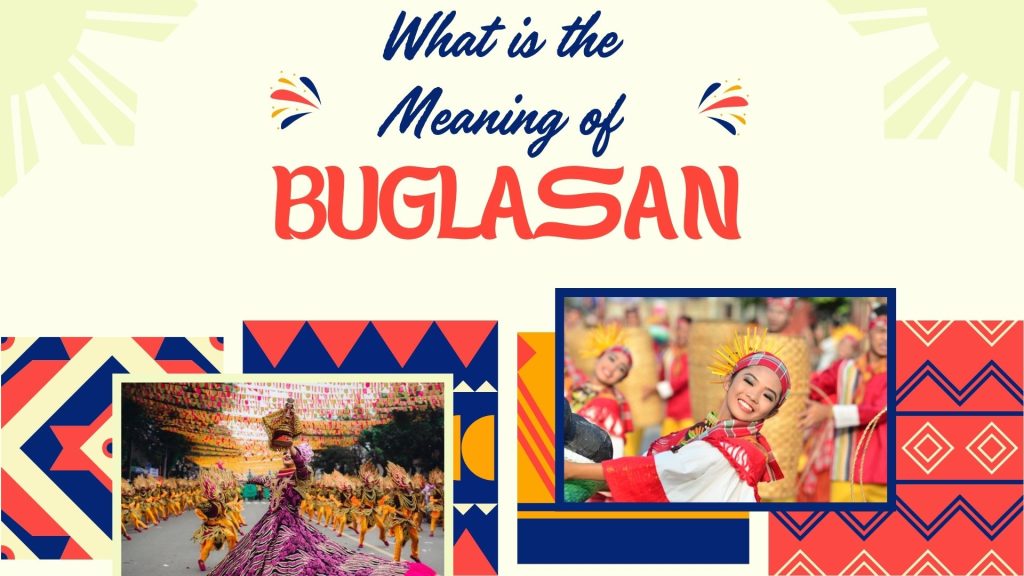
Buglasan derives its name from the word “Buglas,” an ancient term referring to the island now known as Negros, specifically Negros Oriental, in the Philippines. The term “Buglas” is believed to be coined by the island’s early inhabitants and refers to a type of tall, thick grass that once grew abundantly in the area. However, the meaning of Buglasan goes beyond its etymological roots, encapsulating a rich cultural and historical significance deeply embedded in the identity of the Negros Oriental region.
Etymology and Historical Context
The term “Buglas” was documented as early as the 16th century, when Diego Lopez de Povedano, a Spanish cartographer, created a map of the island in 1572. He referred to the land as “Buglas Insulis”, highlighting its notable flora. The word “Buglas” itself is derived from the Cebuano or Hiligaynon language, meaning “to cut off” or “severed.” Some historians believe this could reference the idea that Negros Island was once connected to a larger landmass, and rising sea levels eventually cut it off, making it an isolated island.
Although “Buglas” refers to the reed-like grass, its metaphorical significance is crucial. The festival that takes its name from this word—Buglasan—represents the unification and coming together of various communities across Negros Oriental, showcasing the idea that despite being “cut off,” the people maintain strong cultural bonds and unity.
Cultural Significance of Buglasan
Buglasan Festival, also known as the “Festival of Festivals,” was first celebrated in 1981 and serves as a grand, province-wide showcase of the different traditions, cultures, and local festivals from various municipalities and cities in Negros Oriental. The idea behind Buglasan is to unite the diverse communities of the province through a shared celebration of heritage. Each municipality brings its own unique flavor to the event, symbolizing how different parts of Negros Oriental, though distinct, are deeply interconnected.
The word “Buglasan” has thus evolved from its original reference to the grasslands into a broader symbol of cultural identity, unity, and pride for the people of Negros Oriental. The festival highlights the importance of preserving the local customs, history, and traditions that make the province unique while fostering a sense of belonging among its people.
The Festival’s Role in Defining the Meaning of Buglasan
The Buglasan Festival emphasizes inclusivity, cultural pride, and the celebration of both individual and collective identity. Towns and cities from all over Negros Oriental participate, and while each area showcases its unique local festivals and customs, Buglasan serves as an opportunity to transcend individual differences and highlight shared cultural heritage. This notion of unity in diversity is at the core of what Buglasan represents.
Key elements of the festival include:
• Cultural Exhibitions: Each town or city sets up booths and displays to showcase their local traditions, products, crafts, and history. This provides an opportunity to experience the rich variety of Negrense culture.
• Competitions: Events like the Festival Showdown and the Street-Dancing Parade involve different municipalities competing in a display of cultural performance and creativity.
• Music and Dance: Traditional music and dance, such as the Rondalla (stringed instrumental group) and Balak and Balitaw (Filipino poetry and folk singing), are performed, highlighting the province’s artistic heritage.
• Search for the Festival King and Queen: Symbolizing the festival’s celebration of its people, the Buglasan King and Queen are chosen from among the participants.
Through these festivities, Buglasan expresses the communal spirit and cultural wealth of the province, giving new meaning to the ancient term.
Symbolism: From “Cut Off” to “Coming Together”
Although the term “Buglas” may historically have referred to something being cut off, the Buglasan Festival reinterprets this meaning in a modern context. Rather than separation, it symbolizes the coming together of communities. Each participating city and municipality brings its distinct cultural identity, but they join in celebration as one province, one family, and one people.
Buglasan, in this sense, speaks to the ability of people to come together, transcending geographical and cultural divides, to celebrate what makes them unique and what binds them together. The festival is not just a celebration of traditions; it is a celebration of unity, resilience, and cultural continuity.
What is Buglasan Festival in Dumaguete?
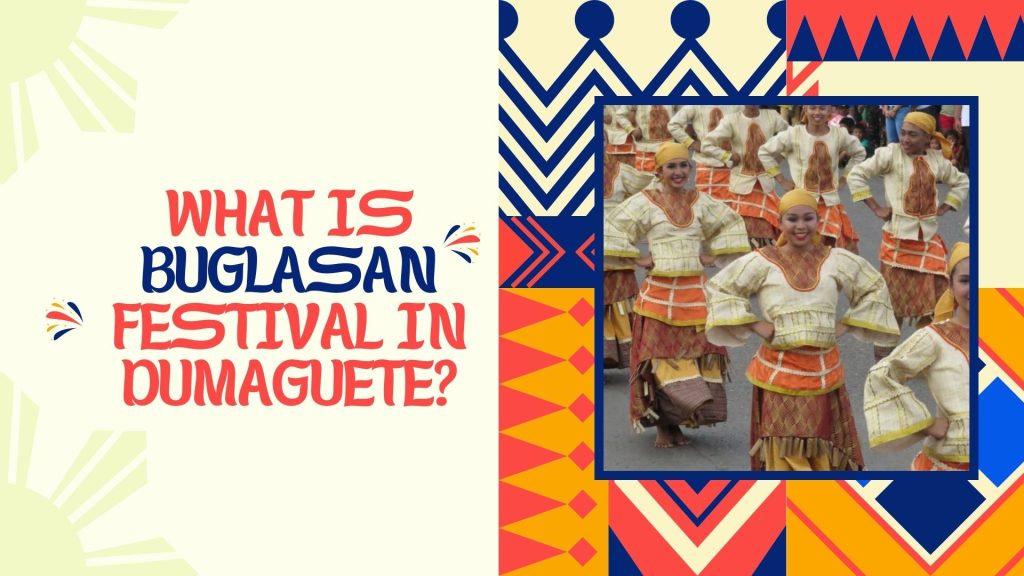
Buglasan Festival, known as the “Festival of Festivals,” is one of the most anticipated annual celebrations in Dumaguete City, Negros Oriental, Philippines. This festival is a unique event where different municipalities and cities across the province come together to celebrate their local cultures, traditions, and achievements through a series of cultural presentations, competitions, and exhibitions. Held in October, it serves as a showcase of the diverse festivals from the various localities of Negros Oriental.
Buglasan Festival stands out not only because of its scale and grandeur but also due to its historical and cultural importance. It symbolizes unity, camaraderie, and pride for the people of Negros Oriental while promoting the province as a cultural and tourist destination. Below is an extensive exploration of the festival’s origin, significance, activities, and role in the local and national cultural scene.
Historical Background of Buglasan Festival
Buglasan Festival traces its roots back to 1981, making it the first provincial-wide festival in the Philippines. It began as an initiative of the Negros Oriental provincial government to bring together the various municipalities and cities of the province to celebrate their unique festivals in one grand event. The name “Buglasan” comes from the word “Buglas,” the ancient name for Negros Island, which refers to the tall reed-like grass that once grew abundantly in the area. The word “Buglasan” itself implies the act of coming together—a fitting name for an event meant to unify the province.
Initially, the festival was a modest gathering where towns showcased their unique cultural identities and participated in friendly competitions. Over the years, Buglasan has grown into a massive cultural extravaganza that draws tourists, locals, and government dignitaries from across the country.
Purpose and Significance
The main purpose of Buglasan Festival is to celebrate the rich cultural diversity of Negros Oriental. It provides a platform for each participating town or city to showcase its unique local festivals, arts, crafts, traditions, and food. This celebration highlights the unity among Negrenses despite their geographical, cultural, and historical differences. Buglasan also serves as a cultural preservation tool, ensuring that the traditions and folkways of the people are not lost amid modernization.
Furthermore, Buglasan promotes tourism in Negros Oriental, positioning Dumaguete City as a hub of cultural and historical heritage. The festival contributes to the province’s economy by attracting tourists and generating local income through food fairs, souvenir sales, and various tourism-related activities.
Local Festivals within Buglasan
What makes Buglasan unique is that it brings together the best of the individual festivals from across Negros Oriental. Some of the key local festivals that are part of Buglasan include:
- Sinulog sa Tanjay(Tanjay City) – A religious and cultural festival in honor of Señor Santo Niño.
- Yagyag Festival (Bacong) – Celebrating the unique life cycle of the crabs that thrive in Bacong’s mangrove swamps.
- Tawo-Tawo Festival (Bayawan City) – Celebrating the use of scarecrows in local farming and agriculture.
- Inagta Festival (Siaton) – A tribute to the province’s indigenous peoples and their way of life.
Economic and Social Impact
The Buglasan Festival has a significant impact on the local economy and the social life of the Negrense people. It provides economic opportunities for local businesses, artisans, and farmers by increasing foot traffic and tourism to Dumaguete City. The trade fairs and food markets allow small-scale entrepreneurs to showcase their goods, contributing to the local economy.
Socially, the festival strengthens the bonds within and between communities. It fosters a sense of pride and belonging among the people of Negros Oriental. It also serves as a venue for intergenerational learning, where older members of the community pass down their traditions to the younger generation.
Buglasan as a Tourist Attraction
For tourists, the Buglasan Festival offers a chance to experience the rich culture and traditions of Negros Oriental in one grand event. It provides an immersive cultural experience, with colorful street parades, traditional music and dance, and the opportunity to taste local delicacies and interact with Negrense people.
Dumaguete City, known as the “City of Gentle People,” becomes a vibrant center of tourism during the festival, with visitors flocking to see the various performances, exhibits, and competitions. The festival has helped position Negros Oriental as a key cultural and tourist destination in the Philippines.
History of Buglasan Festival
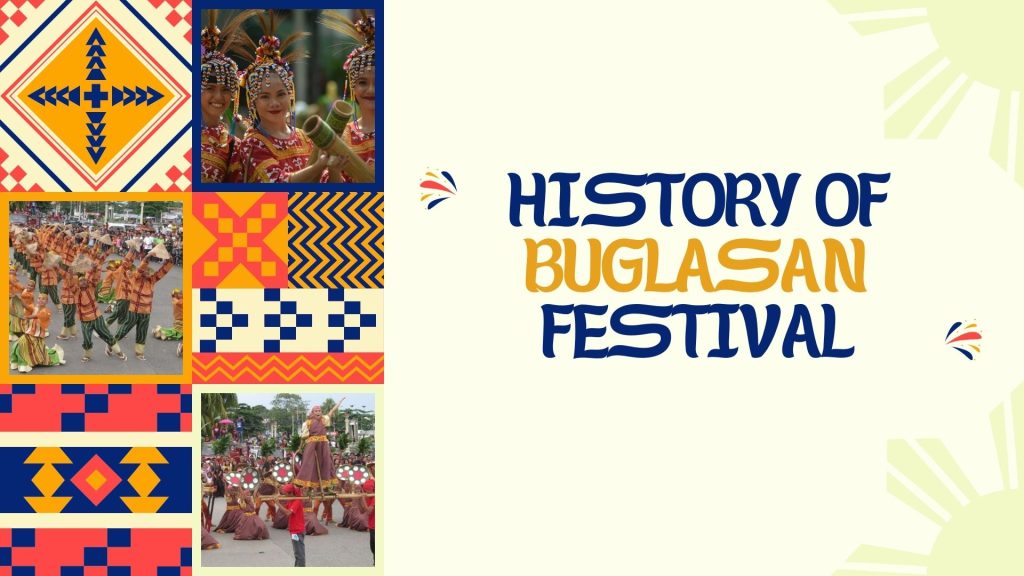
The Origins of Buglasan Festival
The Buglasan Festival has its roots in the early 1980s, when the local government of Negros Oriental sought to create a cultural event that would unite the province’s towns and cities under one celebration. It was conceptualized during the administration of then-Governor Herminio G. Teves in 1981 as a way to celebrate and promote the diverse cultures and traditions within the province. The provincial government aimed to encourage each municipality to participate by showcasing their local festivals and talents.
The festival’s name is derived from “Buglas,” the ancient name of Negros Island, which refers to the tall, thick grasses that were abundant in the region during pre-colonial times. The word “Buglas” is said to mean “to cut off” or “severed,” possibly alluding to the island being cut off from a larger landmass due to rising sea levels. Despite this origin of isolation, the Buglasan Festival, in contrast, represents unity—a celebration of the different municipalities coming together as one.
The inaugural Buglasan Festival was relatively modest compared to its current scale, but it laid the foundation for an annual tradition. The first few years were about building momentum, fostering local pride, and encouraging communities to participate in a collective celebration of culture.
The Evolution of Buglasan Festival
The early years of the Buglasan Festival were centered on the “Festival Showdown”, where different municipalities presented their local festivals through music, dance, and cultural performances. Over time, the festival expanded to include more events and competitions that celebrated not only the performing arts but also the unique products, crafts, and traditions of each participating town.
The early 1990s saw the festival becoming a full-fledged province-wide event, with more towns and cities getting involved, each trying to outdo the other in terms of creativity and presentation. During this period, Buglasan became more competitive, with different municipalities showcasing their best performances and vying for prestigious awards in various categories, such as street dancing, showdown competitions, and cultural exhibitions.
Freedom Park in Dumaguete City gradually became the central hub for the festival, with the area transformed into a bustling space filled with booths representing each town. These booths would showcase the agricultural products, handicrafts, and cultural symbols of the respective municipalities. Nightly events, concerts, and food fairs also became a mainstay, turning the festival into a vibrant celebration that attracted not only locals but also visitors from other parts of the country and abroad.
Key Milestones in Buglasan Festival History
- 1981: Inception of Buglasan Festival
- Under the leadership of Governor Herminio G. Teves, the Buglasan Festival was created as a way to unite the municipalities of Negros Oriental and to foster cultural pride.
- Late 1980s and Early 1990s: Expansion of the Festival
- Buglasan grew from a small event into a province-wide celebration. More towns and cities started participating, and the festival included a wider range of events, such as sports competitions, art exhibits, and trade fairs.
- 1997: Recognition as a Major Cultural Event
- Buglasan was recognized as the official festival of Negros Oriental by Republic Act 7355 (National Living Treasures Award), giving the festival national recognition as a significant cultural event in the Philippines.
- 2000s: Boost in Tourism and Economic Impact
- The festival’s influence began to extend beyond cultural celebration, becoming a key driver of tourism and local economic development. Trade fairs, food festivals, and nightly concerts began attracting tourists, boosting local businesses.
- 2005: Transfer to October
- Initially held in December, the Buglasan Festival was moved to October to coincide with the Negros Oriental Foundation Day, making it an official annual celebration during the province’s anniversary month.
- 2008: Expansion of Civic Participation
- The festival started including non-government organizations (NGOs), schools, and private companies in its events, making Buglasan not only a cultural celebration but also a community-building activity.
- 2010s: Continued Growth and Modernization
- The Buglasan Festival grew to encompass over a week of events, featuring advanced technology in performances, professional stage lighting, and high-level organization, all while preserving its roots in traditional Negrense culture.
The Role of Buglasan Festival in Cultural Preservation
One of the most significant impacts of the Buglasan Festival has been its role in the preservation of local culture and heritage. By encouraging towns to showcase their traditional dances, music, and customs, the festival ensures that these aspects of Negrense life are passed down to younger generations.
Moreover, Buglasan serves as a platform for cultural education. It allows younger Negrenses to learn about their heritage through performances and exhibits, while also offering a space for local artists and craftsmen to showcase their work.
Where is the Buglasan Festival?
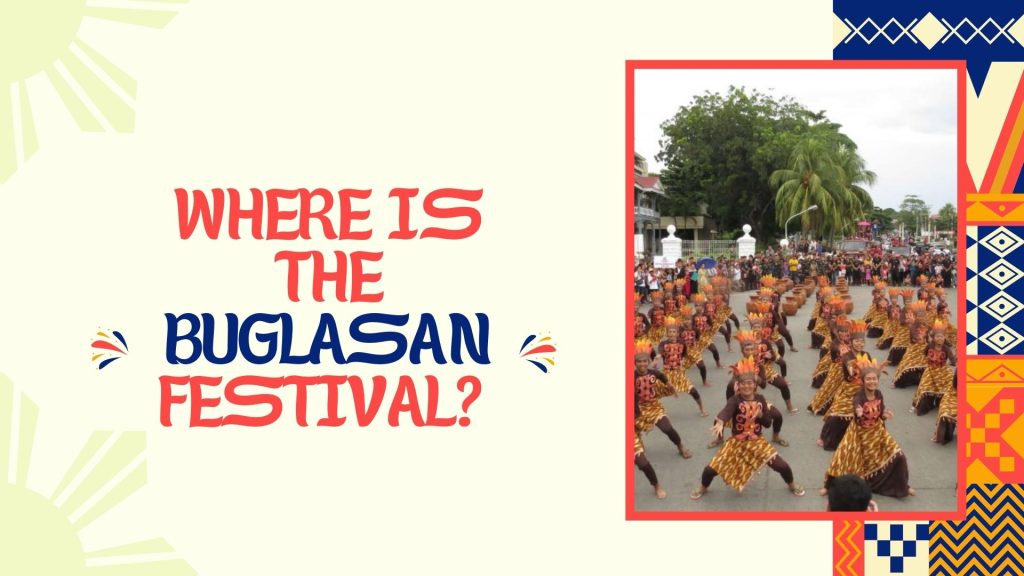
The Buglasan Festival is celebrated in Negros Oriental, a province located in the Central Visayas region of the Philippines. The festival is primarily centered in the province’s capital, Dumaguete City, which serves as the main venue for the grand cultural event. Known as the “City of Gentle People,” Dumaguete transforms into a vibrant festival hub during October, as it hosts participants and visitors from various towns and cities across Negros Oriental.
Geographical Context: Negros Oriental and Dumaguete City
Negros Oriental is situated on the southeastern part of Negros Island, which is one of the major islands in the Visayas. The island itself is divided into two provinces: Negros Occidental (in the western part) and Negros Oriental (in the eastern part). Dumaguete, the provincial capital, lies along the coast of Tañon Strait, offering a picturesque backdrop of sea and mountains.
The city serves as the gateway to the rest of Negros Oriental and is accessible via land, air, and sea transportation, making it a convenient and strategic location for hosting large events like the Buglasan Festival. Its welcoming atmosphere, historical significance, and position as the cultural center of the province make it an ideal setting for this grand celebration of local heritage.
Key Locations for the Buglasan Festival in Dumaguete City
The Buglasan Festival takes place at several major venues across Dumaguete City, each offering different cultural experiences and events. These locations serve as the heart of the festival, where various competitions, performances, and exhibits unfold.
- Freedom Park
- Freedom Park is the central location for the Buglasan Festival. It becomes a bustling hub for the festival’s week-long activities, featuring booths from the various towns and municipalities of Negros Oriental. These booths typically showcase local products, cultural exhibits, and handicrafts, making it a focal point for tourism and commerce during the event.
- The park also hosts nightly events, such as concerts, cultural performances, and food fairs, which are major attractions for both locals and tourists. The stage in Freedom Park is often used for grand competitions and pageants, such as the search for the Buglasan Festival King and Queen.
- Sidlakan Negros Village
- Another important venue is Sidlakan Negros Village, a cultural complex where exhibits of Negros Oriental’s rich heritage and traditions are displayed. During Buglasan, the village comes alive with additional showcases of indigenous crafts, food, and performances. It’s a space where local artistry and traditional craftsmanship are highlighted, and visitors can immerse themselves in the Negrense way of life.
- Rizal Boulevard
- Rizal Boulevard is a popular waterfront promenade in Dumaguete City that serves as the backdrop for some of the most exciting events of the Buglasan Festival. During the festival, it hosts the street-dancing parades and fireworks displays, which are two of the most anticipated highlights. The boulevard becomes a lively space for spectators to gather and enjoy the energetic performances of the street-dancing contingents.
- The two-night fireworks competition, which takes place along Rizal Boulevard, is one of the climactic moments of the festival. Crowds of locals and tourists gather along the waterfront to witness the dazzling displays of color and light against the night sky.
- Lamberto Macias Sports and Cultural Complex
- The Lamberto Macias Sports and Cultural Complex is the main venue for the Festival Showdown, where various municipalities and cities compete through cultural performances. It is here that towns present their local festivals in a grand display of costumes, music, and dance, vying for the prestigious title of best performance. The complex is known for its large seating capacity and state-of-the-art facilities, making it an ideal venue for such major competitions.
- Negros Oriental Convention Center
- The Negros Oriental Convention Center also plays a significant role in the Buglasan Festival, hosting pageants, competitions, and exhibitions. Events like the Miss Negros Oriental beauty pageant and the Buglasan King and Queen competition are often held here, attracting large crowds eager to witness the crowning of the festival’s royalty.
Participating Towns and Cities in Negros Oriental
While Dumaguete City is the central location for the festival, the Buglasan Festival brings together participants from all over Negros Oriental. The festival is a showcase of local festival from various municipalities and cities, each with its own distinct cultural flavor. Some of the key participating areas include:
- Canlaon City – Known for its Pasayaw Festival, celebrating the agricultural bounty of the city.
- Tanjay City – Home to the Sinulog sa Tanjay, a religious festival honoring Señor Santo Niño.
- Bayawan City – Celebrates the Tawo-Tawo Festival, which is focused on agriculture and features scarecrow-themed events.
- Bacong – Famous for its Yagyag Festival, highlighting the life cycle of crabs in the mangrove swamps.
- Mabinay – Known for the Langub Festival, celebrating the natural cave systems that define the municipality.
Each participating town brings its own unique cultural heritage to Dumaguete City during the Buglasan Festival, contributing to the festival’s reputation as the “Festival of Festivals” in Negros Oriental.
The Significance of the Location
The choice of Dumaguete City as the host of the Buglasan Festival holds both symbolic and practical significance. As the provincial capital, Dumaguete serves as the political, cultural, and economic center of Negros Oriental. Its strategic location along the coastline makes it a convenient meeting point for participants from across the province. The city is also known for its warm hospitality, embodying the festival’s spirit of unity, celebration, and cultural pride.
Moreover, Dumaguete’s historical sites, universities, and natural attractions make it an attractive destination for tourists who attend the Buglasan Festival. Visitors can explore the city’s rich history while also enjoying the festivities, creating a well-rounded cultural and travel experience.
What Month is the Buglasan Festival Held?
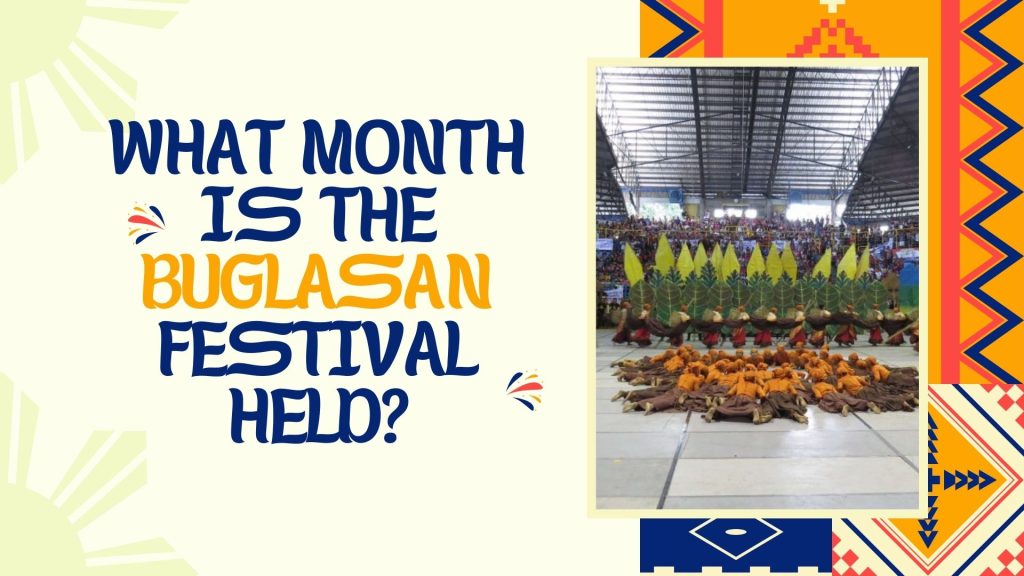
The Buglasan Festival is held annually during the month of October in Negros Oriental, Philippines. Specifically, it takes place in the middle weeks of October, often lasting for about one and a half to two weeks. This cultural festival, which showcases the unique heritage, traditions, and local festivals of the towns and cities across the province, has become a key highlight of the province’s cultural calendar and an important event for both locals and visitors.
History of the Festival Date
Originally, when the Buglasan Festival was conceptualized in the early 1980s, it was celebrated in December. However, in 2002, the festival date was moved to October to coincide with the Negros Oriental Foundation Day, which commemorates the founding anniversary of the province. This shift in the festival’s schedule was a deliberate move to consolidate the provincial celebrations into a single, grand event that highlights the cultural diversity and unity of Negros Oriental.
October was chosen as the ideal month to hold Buglasan not only because of the Foundation Day but also because it is a dry season in the Philippines, providing more favorable weather conditions for outdoor events, parades, and performances. This change allowed the festival to flourish in a more festive atmosphere, as it is typically marked by sunny days and clear skies—ideal for the colorful street dancing and grand parades that are part of the festivities.
Duration and Timeline
The Buglasan Festival is typically held for around 10 to 15 days, depending on the specific year’s schedule of activities. It often begins in the second week of October and continues until the third or fourth week of the month. The exact dates may vary slightly each year, but the celebration always falls within the middle weeks of October.
Conclusion
The Buglasan Festival began as a simple celebration of the different municipalities and cities of Negros Oriental, but over the years, it has grown into one of the most important cultural events in the province and the Philippines. Rooted in the ancient history of the island, Buglasan has evolved into a vibrant and dynamic festival that brings together the diverse communities of Negros Oriental. It serves as a powerful reminder of the rich cultural heritage of the region, while also fostering unity, pride, and a sense of belonging among its people. As Buglasan continues to evolve, it remains a beacon of Negrense identity, proudly preserving and promoting the traditions that define the province.
Want to visit Buglasan and try our tours? Inquire now! please fill up the form.